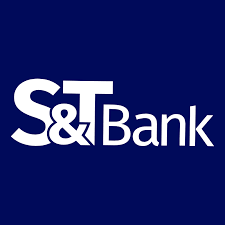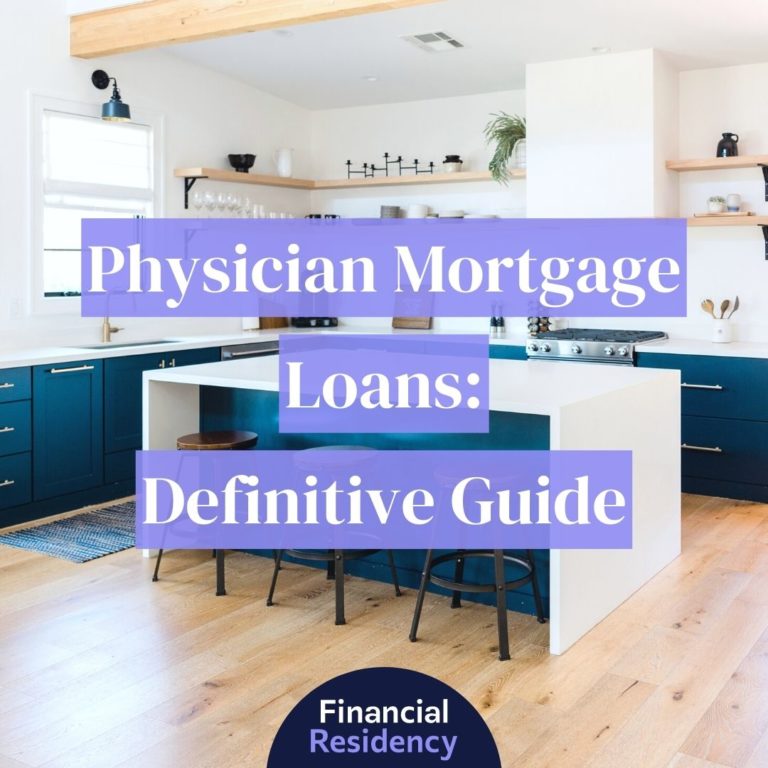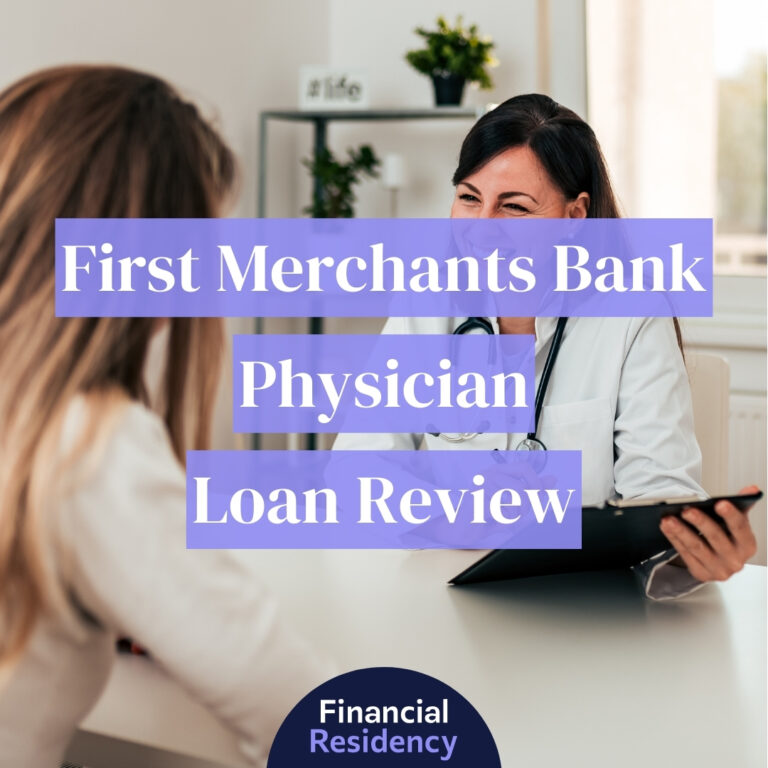S&T Bank’s doctor mortgage product is a popular offering among its more consumer-friendly and innovative products.
Designed to help physicians who often have significant student loan debt, the program offers more relaxed terms than traditional mortgages. The program has several loan options for borrowers to receive up to 95% financing for their home purchase with no maximum loan amount.
Additionally, the program is open to physicians and other advanced-degree professionals, including those who work outside of the medical field.
About S&T Bank
S&T was founded in 1902 as Savings and Trust Bank in Indiana, Pennsylvania. Over the years, its presence has grown to over 75 branch locations throughout Pennsylvania, New York, and Ohio.
Today, it’s the eighth-largest bank based out of Pennsylvania. With over $9 billion in assets, S&T Bank has broad name recognition throughout the region.
The bank is known for its financial stability, charitable giving, and wide range of financial products that include interest-bearing checking accounts and second-chance checking. S&T recently made headlines for dropping its NSF fees.
S&T Bank is headquartered in Indiana, Pennsylvania. Its 1,200+ employees provide a full range of personal and business banking solutions.
- BBB score: A+
- CEO: Chris McComish
- JD Power Score: 675
- Parent company: S&T Bancorp, Inc.
- Phone number:
- Services offered: Business and consumer banking, including checking, savings, money market accounts (MMAs), certificates of deposit (CDs), credit cards, auto loans, student loans, home equity loans, conventional mortgages, FHA loans, and medical loans.
S&T Bank Physician Loan: Fast Facts
Here are a few fast facts about S&T Bank’s specialty financing program.
- Discounts: No current promotions
- Financing options: Financing available up to 95%. No 100% financing options.
- Physician loan products: Fixed-rate and adjustable-rate mortgages
- Maximum loan amount: No cap
- Qualifying degrees: MD, DO, DDS, DMD, DVM, OD, and certain *non-qualifying medical degrees.
- Private mortgage insurance: No private mortgage insurance (PMI) requirement.
*PhD and JD degrees may also be considered.
S&T Bank Physician Loan: Qualifications
The bank’s doctor mortgage program is not widely advertised. It offers special financing to doctors, and other qualifying professionals, a group that may not qualify for a conventional mortgage due to high student loan debts.
S&T can offer personalized underwriting with more lenient requirements for debt-to-income ratio, qualifying loan amount, and other borrower terms.
S&T Bank’s physician loan qualifications are:
- Good to Excellent Credit: 700 minimum FICO score.
- Down Payment: 5–20% down payment depending on the loan amount
- Owner-Occupied Property: Must be used to purchase or refinance an *owner-occupied, primary residence.
- Eligible Degree: Must have a medical doctor, doctor of osteopathy, doctor of optometry, doctor of veterinary medicine, **doctor of philosophy, or juris doctor degree.
- Significant Savings: No cash reserve requirements specified.
- Verified Income: Pay stubs or future-dated employment contract.
*Purchase or refinance of a second home or investment property may be permissible in certain circumstances. Speak with an S&T Bank loan officer.
**Restrictions may be imposed on qualifying doctor of philosophy (PhD) degrees.
Discover The Best Lenders Answer just a few questions about your career, where you're buying, and how much you want to borrow. Our service will then show you the exact programs you're eligible for from vetted physician loan specialists who will guide you through every step of the process – obligation-free!
How to Apply
Below are the general steps that you’ll need to complete when going through the home-financing process. Understanding what to anticipate can make the home-buying process much easier.
Get Pre-Qualified
Your pre-qualification is the first step. Here, you provide the bank with basic information like occupation, first-time homebuyer status, household income, total debts, and total monthly expenses. Then, the bank will let you know the loan options and type of financing you might qualify for.
Often, this is a soft credit pull and a rough estimate from your lender. This figure offers some idea of how much house you may be able to afford and what your monthly mortgage payments might look like.
This information is helpful, but it’s not a guarantee of your ultimate loan approval amount. It’s a good jumping-off point though.
Prepare Your Documents
Start preparing all of your paperwork. Financial institutions and mortgage providers must diligently review a potential homeowner’s financial situation. They will request several documents (generally digital copies will suffice) to prove your identity as well as your finances.
Some of these documents may include:
- Bank account statements
- Tax returns (1-3 years)
- Proof of income (1-2 months of pay stubs)
- Proof of future-dated employment (signed work contract)
- Proof of medical or educational credentials
- Student loan documentation, including monthly payments or terms of deferment or forbearance
- Social Security number (SSN) card
- Driver’s license or government-issued identification card
Financial institutions may require additional documentation (including written statements) to validate assets or debts they cannot confirm based on your credit pull.
Credit Review
In this phase, the bank will review your credit score. This means a hard pull of your credit history. The lender is confirming consistent, on-time payment history and no delinquencies or judgments. They’re looking for other red flags too, like your credit use ratio or other hard credit inquiries.
Although your credit report does not have specific salary details, lenders can see your total debt load and then calculate your overall debt-to-income ratio or DTI.
S&T Bank typically requires a minimum credit score of 700 to get a specialty professional loan. However, some borrowers may receive approval with a lower score. But already a 700 score is quite lenient; many other banks with similar programs require at least a 720.
When the bank reviews your credit report, make sure that you look over the information too. You want to look for any errors and ensure the overall accuracy of the report’s findings.
Get Pre-Approval
Getting pre-approved is a more formal process than just getting pre-qualified. This is when a loan officer or other bank representative lets you know the total amount of financing you qualify for so you know how much new-house budget you have to work with.
Many high-income doctors may qualify for $1 to $2 million. Any pre-approval amount you do get is good for 90 days. That’s why buyers should hold off on getting pre-approved until they are serious about placing an offer on a house.
Before the formal pre-approval, however, most buyers have already started looking at homes in earnest with a realtor. Some realtors will not even work with buyers until they have been formally pre-approved.
Confirm and Lock in the Rate
After you have completed your mortgage application and been pre-approved for a loan amount, the lender will follow up with you to confirm the financing terms, including the length of the loan and interest rate. The rate is good for 45 days, but it can change by the time you close on your home. Here are some reasons the locked-in rate is subject to change.
- Interest rate fluctuation, due to changes in Federal Reserve policies or general market swings
- Change in income or employment status
- Change in credit score
- Change in debt-to-income ratio
- Change in loan-to-value ratio; the appraised value does not match the financing value
- Change in the type of loan product, such as going from a fixed-rate mortgage to an ARM
- Change in down payment options (going from 20% to 5% down) or repayment terms
- Changes in the lender’s internal policies for underwriting criteria; can be especially prevalent for self-employed physicians and occupations
- Expiration date; delays in closing can negatively impact your rate
- Change in property type, such as switching from a single-family home to a triplex
Additionally, it’s not unusual for a bank to grant conditional pre-approval. Caveats may be imposed upon the borrower, such as needing to improve their DTI ratio to get financing.
After you get your pre-approval, don’t do anything that could harm your credit score like taking out financing for furniture. Wait until you’ve closed on your home loan.
Alternatives to S&T Bank
In addition to S&T Bank, many other financial institutions offer physician mortgages. They vary in the type and amount of financing they may offer, as well as qualifying medical designations. Here’s a rundown on how three other bank programs compare to S&T’s.
KeyBank
KeyBank offers a medical loan program that is open to Doctors of Medicine (MD), Doctors of Osteopathic Medicine (DO), Doctors of Podiatric Medicine (DPM), Doctors of Dental Surgery (DDS), and Doctors of Dental Medicine (DMD). This includes interns, residents, and fellows in these specific fields, however, they may be eligible for reduced financing amounts.
KeyBank will loan up to $3.5 million for the purchase or refinancing of a first or second home. For pricier homes, this makes Key Bank a good option. Most other doctor mortgage programs fill finance up to $2 million at most.
On the flip side, however, borrowers must come to the table with cash. There are no zero money-down mortgage options. KeyBank will finance up to 95% at most, which means you need to have a down payment of at least 5%. For a $1 million home, that’s $50,000.
First Horizon Bank
Memphis-based First Horizon Bank, not related to Horizon Bank headquartered in Michigan City, Ind., has a physician loan program that will offer 100% financing for loans up to $750,000. With a down payment, eligible borrowers can take out as much as $2.5 million.
Additionally, no private mortgage insurance (PMI) is required and the bank will exclude student loan debt from its DTI calculation if your student loans are in good standing and on deferment for up to 12 months.
First Horizon’s specialty loan program is offered to Medical Doctors (MD), Osteopath Doctors (DO), Podiatrists (DPM), and Oral and Maxillofacial Surgeons (DDS and OMS).
As an additional requirement, borrowers must be current bank customers and have an active checking account with First Horizon. Mortgage borrowers can open an account online to fulfill this requirement.
Flagstar Bank
Michigan-based Flagstar Bank is one of the nation’s largest mortgage lenders. Additionally, its physician mortgage program is open to the broadest range of medical professionals you’ll find. Pharmacists, nurses, and many advanced-degree non-medical professionals can participate.
Qualifying degrees include:
- Medical Resident (Educational License)
- Medical Doctor (MD)
- Doctor of Dental Surgery (DDS and OMS)
- Doctor of Dental Medicine (DMD)
- Doctor of Optometry (OD)
- Doctor of Ophthalmology (MD)
- Doctor of Pharmacy (PharmD)
- Doctor of Podiatric Medicine (DPM)
- Doctor of Osteopathy (DO)
- Physician Assistant (PA)
- Registered Nurse (RN)
- Certified Registered Nurse Anesthetist (CRNA)
- Nurse Practitioner (NP)
- Clinical Nurse Specialist (CNS)
- Airline Transport Pilot (ATP)
- Certified Public Accountant (CPA)
- Attorney (JD)
- Veterinarian (DVM)
While S&T Bank requires a down payment of at least 5% for its mortgage products, Flagstar offers 100% financing for home purchases up to $1 million. However, Flagstar will only finance up to $1.5 million whereas S&T Bank has no hard cap.
As another program distinction, Flagstar Bank will offer professional mortgage financing to H-1B visa holders who want to pursue home ownership in the U.S. For these individuals, an excellent credit score and employment contract may be required.
TD Bank
TD Bank has a popular doctor loan program that offers doctors and other eligible professionals a home loan of up to $1.5 million. Qualified borrowers can get a zero down payment mortgage for up to $750,000. TD requires a 10% down payment for additional financing.
Like S&T Bank, TD Bank offers fixed-rate and adjustable-rate mortgage options. TD’s program, however, is more geographically expansive than S&T. TD Bank’s program is open for home purchases in the District of Columbia and 15 states: CT, DE, FL, MA, ME, MD, NC, NH, NJ, NY, PA, RI, SC, VA, and VT. S&T Bank physician financing is available in only eight (8) states.
Pros and Cons
Here’s a quick highlight of the pros and cons of S&T Bank’s physician mortgage program.
Pros
- Open to a broad range of medical and non-medical professionals. This includes MD, DO, DDS, DMD, DVM, or OD degrees, and in certain instances, a JD or PhD degree may qualify.
- Open to medical residents; full-time residents in a qualifying medical profession can obtain financing.
- Lenient credit score A minimum score of 700 is needed for financing; many other similar bank programs require at least 720.
- No maximum loan amount. Other physician programs generally cap financing at $1.5 to $3.5 million.
Cons
- No 100% financing options. A down payment of at least 5% is required for any mortgage option.
- Not offered in all 50 states. S&T’s physician loan program is available only in eight (8) states: PA, OH, NJ, WV, DE, KY, MI, and VA.
Frequently Asked Questions
Are Dentists Eligible for a Medical Loan from S&T Bank?
Probably. S&T Bank publishes limited information about doctor loans on its website. Among eligible professionals, DDS, OMS, and DMD degrees are not specified. However, these are all advanced medical degrees and S&T does advertise flexibility in working with a wide range of advanced-degree professionals in and outside of medical fields. Our editorial team has reached out to S&T Bank for a more definitive answer.
Are There Closing Costs for Physician Mortgages?
Generally, yes. Closing costs commonly range from 3% to 5% of the total loan amount. While it’s often possible to obtain a doctor loan with no down payment and no PMI requirements, you’re unlikely to get a no-closing-cost loan here. Closing costs can generally be financed or rolled into your total mortgage, however, this will increase your monthly loan payments.
Assuming 4% closing costs, that would be $20,000 in closing costs for every $500,000 borrowed.





